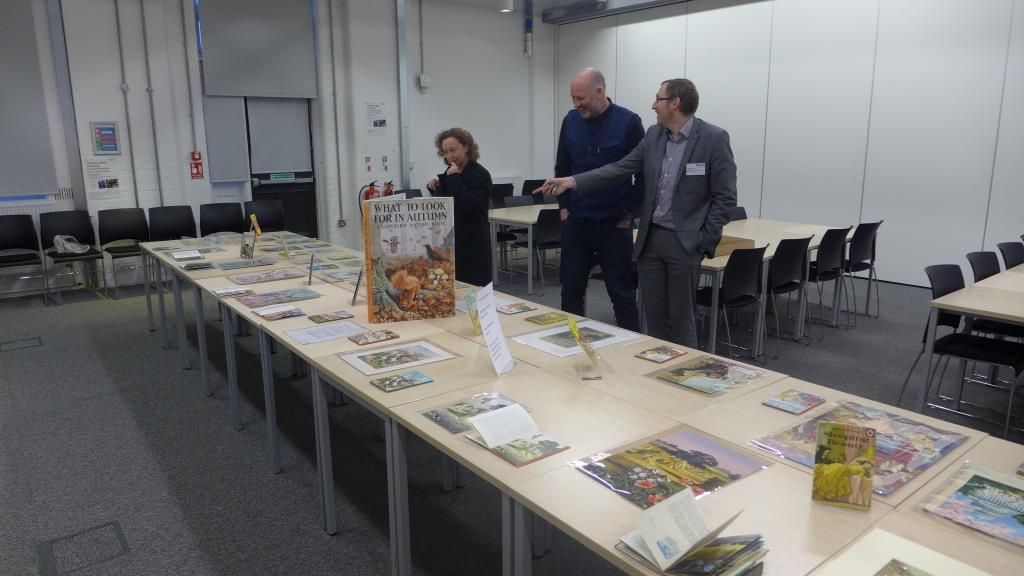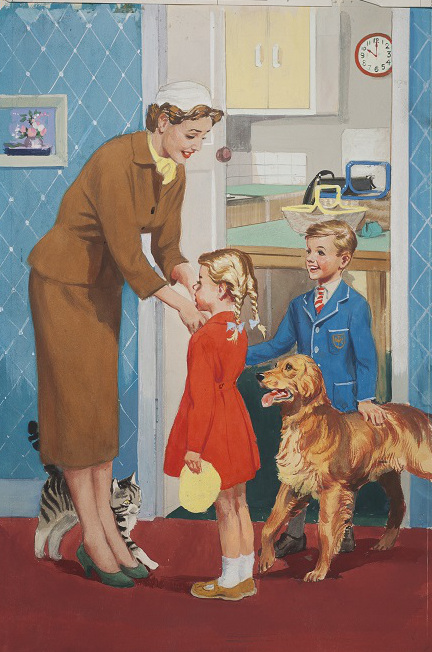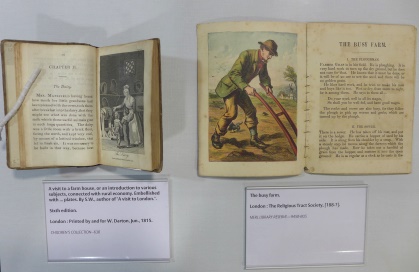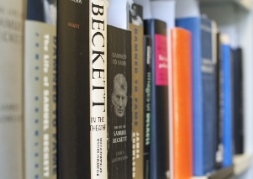A fascinating talk by Lawrence Zeegen with a pop up exhibition was held last night to celebrate the centenary of Ladybird Books. Let our University Archivist, Guy Baxter, fill you in:
We were really pleased to welcome over 80 people to our Ladybird Books centenary event last night. They were treated to a really fascinating and enthusiastic lecture by Lawrence Zeegen, the author of a new book, Ladybird by Design (available at the MERL shop). Showing off some amazing visuals from the iconic books, Lawrence, who is also Professor of Illustration at the London College of Communication, took us through some of the most important series and assessed their cultural context and impact, as well as their design history. He delved into some of the most fascinating areas, such as how the format was devised – as a result of paper shortages – and how Ladybird were persuaded to move into non-fiction children’s books. Lawrence also highlighted the incredible investment that the company made in producing the Key Words reading scheme (i.e. Peter and Jane) in the 1960s. The lecture brought together the best possible elements – an enthusiastic and knowledgeable speaker, an enthusiastic and knowledgeable audience, and some fascinating and visually stunning content.
Accompanying the talk, was a beautiful pop-up display curated by Special Collections staff Claire Wooldridge and Danni Corfield, which showed a wide range of original Ladybird artwork and books. Here at Reading we hold over 700 boxes of artwork – so at least 18,000 individual pieces, and it was lovely to see so many out for people to see. The production of the Ladybird by Design book, and of the exhibition of the same name at De La Warr Pavilion, Bexhill – to which we have lent over 200 artworks – has involved Lawrence and the production team at Ladybird looking at thousands of pieces of artwork in our store. What a fabulous and pleasurable job to have!
Our collaborations with Ladybird this year have been really productive and interesting. Thanks are due to the team there – especially Sara Glenn – and to Lawrence, for making this possible, and also to Caroline Gould, who facilitated the enormous De La Warr loan on behalf of Special Collections. What an achievement!
























